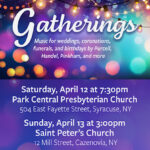Oft Told Tales
BIG SPOILER ALERT; spoilers abound throughout.
The 2018 “A Star Is Born,” the fourth remake of the original 1937 film, touches on issues involving family, work, habits, choices and love. Many of us take our first baby steps toward selfhood in front of audiences who might not notice us or cheer us on. Some people feel they’ve been egged on toward lesser lives to improve prospects for someone else. The fourth “A Star is Born” presents substance and form amid the sometime tyranny of form over substance.
 Director Bradley Cooper quickly introduces us to hard drinking country rocker Jackson Maine played by Bradley Cooper, who, after a stadium gig and seeking alcohol, encounters the heavily made up and polished Ally (Lady Gaga) who is singing Edith Piaf in a drag bar. Jackson, who likes his friends to call him Jack, quickly falls for Ally and Ally’s songwriting, and soon after, invites Ally into his life and onto his stage.
Director Bradley Cooper quickly introduces us to hard drinking country rocker Jackson Maine played by Bradley Cooper, who, after a stadium gig and seeking alcohol, encounters the heavily made up and polished Ally (Lady Gaga) who is singing Edith Piaf in a drag bar. Jackson, who likes his friends to call him Jack, quickly falls for Ally and Ally’s songwriting, and soon after, invites Ally into his life and onto his stage.
At the drag bar, Ally introduces Jack to her friends and her “drag mother,” a term that I learned online usually refers to an experienced drag queen who teaches a younger drag queen the secrets of femininity. Ally, whose actual mother isn’t around, lives with her father (Andrew Dice Clay), a once crooner and current limo driver. When her father asks Ally where she’s been after she returns home from her first brush with Jack, an eventful all-nighter, Ally tells him that she’s been with “Jackson Maine,” adding with a glance, that Jackson is a “drunk.” Her father’s initial excitement at this possible fateful meeting morphs to visible hurt.
Looks, and “looks,” are important throughout “A Star is Born.”
We learn, when Ally learns, that Jack’s mother died at eighteen giving birth to him. We briefly meet and hear about Bobby (Sam Elliott), Jack’s much older half-brother and manager with whom Jack has a complicated relationship. Fear, resentment, and love express themselves in Jack’s and Bobby’s encounters and faces, and, I hope that some moviegoers’ compulsion to look at their smartphones didn’t rob them of seeing the actors’ non-verbal communication onscreen. Silences are a part of, and not rest stops along any story’s narrative path.
Sermon over. Back to the discussion.
Alcohol has long been a social lubricant, stimulant and sedative whose excessive use endangers vulnerable people. Twentieth century acceptance of the disease model of alcoholism removed some stigma from people seeking help. New evidence of how neurons fire and wire together to create emotional and cognitive patterns and habits should further improve our understanding of addiction and ourselves. Being conscious of our own stories, and listening to others, engenders understanding.
In “A Star is Born,” Jack tells his stories to Ally and eventually, to a counselor in an upscale rehab from which Jack emerges not-drinking, still writing, and emotionally naked and vulnerable. His behavior while drunk has rendered him particularly vulnerable to Ally’s manager Rez (Rafi Gavron). Rez had already invited Ally off Jack’s stage, repackaging Ally into a commercially successful persona very different from that of Jack’s natural looking musical partner. Rez wants the newly conscious Jack out of the picture and lets Jack know. Love, self-sacrifice and self-destruction are often linked and, as in previous versions of “A Star is Born,” the “Maine” story ends sadly.
Personas and archetypes loom large in theater, psychology, and myth. Some moviegoers and TV viewers want happy endings everywhere. How do storytellers sympathetically tell a tragic story without seeming to endorse a tragic end? Many revere martyrs, however, martyrdom requires some self-destructive impulse that starts somewhere. Every tragic protagonist has a backstory rooted in some cultural narrative that has a backstory to its backstory.
In the Greek myths that predate western civilization, the god Dionysus is the “twice born” son of the god Zeus and a human mother, Semele. Zeus’s divine wife Hera, forever confronted with Zeus’s infidelities, pretends to be Semele’s friend, convincing Semele to demand that Zeus display his divine nature, a sight Hera knows will kill Semele. When Semele does die, Zeus rescues their love child, carrying Dionysus in his leg until Dionysus is born again. Some stories tell of Hera seeking to destroy the reborn Dionysus by destroying his caretakers and feeding the infant poison. Baby Dionysus is sometimes depicted swilling wine and indeed, the adult god Dionysus is associated with wine, ritual madness and religious ecstasy. Readers and scholars who compare and interpret Eastern Mediterranean texts as culturally specific retellings of older similar stories, suggest that Jesus Christ, said to have transformed water into wine and, born of a human mother and a divine father, is a Dionysian figure. 
The ancient Greeks had their stories and others have theirs.
Ancient Greek physicians also posited that male sperm contained fully formed mini-humans, homunculi, and females’ only contribution to reproduction was as incubator.
And, in the not so distant past, experts thought that alcoholism was a moral failing, or an inherited condition limited to certain marginalized ethnic groups and social classes.
Experts argue nature versus nurture. All of life is nature and nurture.
The 2018 “A Star Is Born” tells a story of nature’s struggle for nurture in a hard, persona driven world. For film lovers who like to read into things, “A Star is Born” is a great read. The music’s great too.











